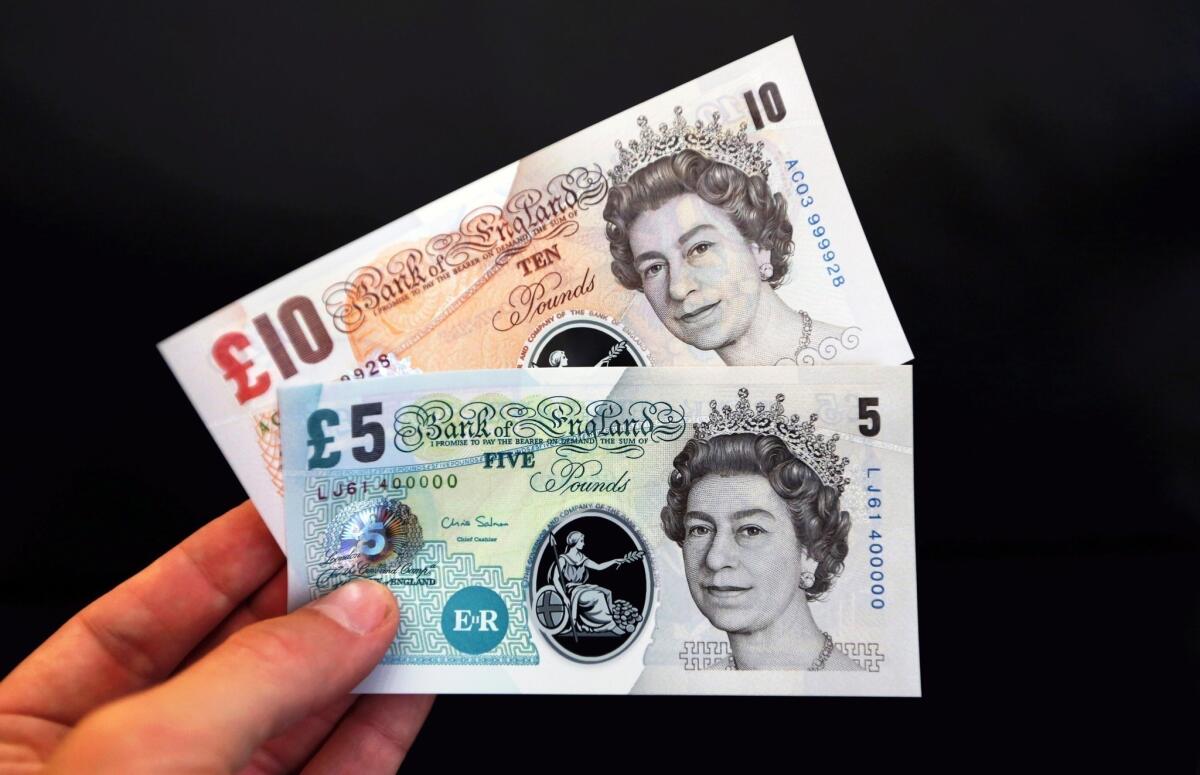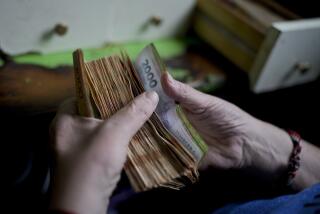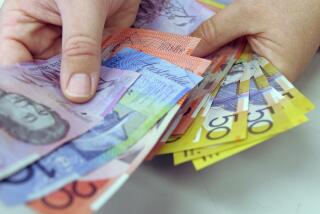Britain to start issuing plastic money in 2016

LONDON -- Paper or plastic? No, not what kind of bag do you want your purchases in; it’s what kind of money you’ll use to pay for them, at least in Britain.
The Bank of England announced Wednesday that, beginning in 2016, it will start issuing polymer banknotes -- in other words, plastic money -- in place of the paper kind. New five-pound bills put into circulation that year will not only feature a portrait of Winston Churchill but should be more resistant against wear and tear and unintended journeys through the washing machine.
The switch to plastic is expected to save money, in more ways than one. The polymer banknotes should last at least 2 1/2 times longer than paper ones, officials say. And that means printing costs will be less in the long run.
“Ensuring trust and confidence in money is at the heart of what central banks do,” Mark Carney, the governor of the Bank of England, said in a statement. “Polymer notes are the next step in the evolution of banknote design to meet that objective. The quality of polymer notes is higher, they are more secure from counterfeiting and they can be produced at lower cost to the taxpayer and the environment.”
But this is a country that loves tradition and can be suspicious of slick innovations. Britain also jealously guards its currency. It has clung tenaciously to the pound when other European nations have opted for the euro.
Before deciding to tinker with the banknotes, the central bank went on a listening tour in the fall, going across the country patiently explaining the benefits of plastic bills and collecting feedback. Bank officials said that nearly 13,000 people responded: 87% approved of polymer notes, 6% disapproved and 7% were neutral.
One skeptical man told the BBC that the prototype felt “a bit like Monopoly money.”
Plastic fivers will roll off the bank’s presses in eastern England in 2016, with 10-pound notes, featuring a likeness of author Jane Austen, to follow a year later. Both will be slightly smaller than their paper counterparts. As a reassuring constant, Queen Elizabeth II’s portrait (or her successor on the throne, if she has died) will continue to grace all British currency.
Britain is not the first country to make “paying with plastic” a phrase as applicable to cash as to credit cards. Any American who has traveled north of the border knows that Canada’s notes are all polymer-based. (Coincidentally or not, Carney was governor of the Bank of Canada before taking up his current post in London earlier this year.) Australia, another former British colony, also uses plastic money.
Officials say the new notes will be hardy enough to come through a washing machine unscathed. But, they warn, ironing will cause them to melt.
ALSO:
U.S. seeks to defuse spat with India
British Great Train Robber Ronnie Biggs dies at 84
Syria: Reports of more than 100 dead in airstrikes on Aleppo
Twitter: @HenryHChu
More to Read
Sign up for Essential California
The most important California stories and recommendations in your inbox every morning.
You may occasionally receive promotional content from the Los Angeles Times.











